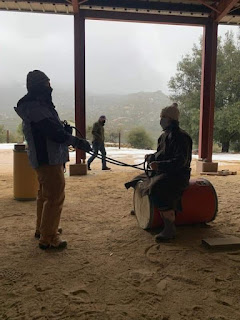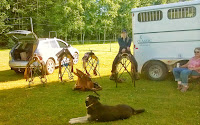Missing time in the saddle?
I've found 50 gal barrels have helped countless students find their seat bones and center.
This has helped them learn to discover and engage the correct muscles to become balanced and what I call "plugged in" when sitting in the saddle.
Practicing while keeping the feet off the ground allows the barrel to reflect the human's imbalance if it begins to roll.
Recently a student posted this,
"How often do we get to take the time to work on the finer details of our horsemanship? Well when its 36 degrees and blowing snow Samantha Harvey of Alternative Horsemanship Remote Horse Coach says its an "opportunity ". I had an amazing lesson today!"
What other non-horse activities or creative things do you do to help improve your body movement awareness and balance?







